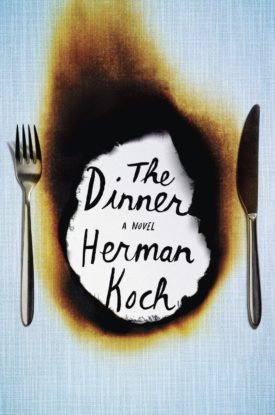 Every time you pick up a new book, you’re taking a tiny risk. Have you wasted your $3 at the used book store? Are you about to waste your time reading a book that you don’t enjoy? (I’ve already done that this year.)
Every time you pick up a new book, you’re taking a tiny risk. Have you wasted your $3 at the used book store? Are you about to waste your time reading a book that you don’t enjoy? (I’ve already done that this year.)
I paused and considered these things before choosing The Dinner. I don’t want to waste time (ever), and I particularly don’t want to choose poorly and repeat my 2017 reading experience. Goodreads reviews were good enough, so my interest was sparked. Plus, the review quote on the cover was from Gillian Flynn: “Chilling, nasty, smart, shocking, and unputdownable.”
The Dinner takes place over five courses – Apertif, Appetizer, Main Course, Dessert, Digestif – at a swanky restaurant in Amsterdam. Two couples are meeting for dinner, though our narrator, Paul, is the only voice we hear. We are in Paul’s head throughout book, and though the setting is the dinner table, the plot unfolds as one peels an onion. Layer by layer.
Better yet, take this analogy. You know the dance scene over the pool in It’s a Wonderful Life? We see George and Mary do the Charleston while the floor is literally splitting in half. They are going to fall in the pool, we know this. They, however, are oblivious.

This image played in my mind while reading The Dinner. As the couples make their way through each course, and as Paul sifts back the layers of story through memories and recollection, we get closer to falling into that pool. We get closer to learning why the dinner needed to happen in the first place. We get close, then Paul pulls us back.
A crime has been committed by the couples’ two teenage sons. They’ve come to dinner to discuss the crime and what to do in its aftermath.
The Dinner isn’t for everyone on account of its slow build. (I think you have to already enjoy this back-and-forth method of storytelling.) I agree with Gillian Flynn that The Dinner is chilling and nasty, and the writing is certainly smart. Unputdownable? I dunno. It’s a touch putdownable, but that’s because the characters aren’t as lovely as George and Mary, and sometimes you don’t want to be the company of bad people.
It is a curious thing, though, to consider what you might do when it’s your child who’s the bad guy.
